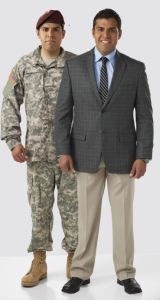Many thanks to two local gracious trans-knowledgeable people Rebecca Chapin and Elaine Martin for their review and suggestions on this blog.
In recognition of November 20th being the annual “Transgender Day of Remembrance” I am publishing this blog called “Five things never to say (or ask of) transgender people.” A few years ago I wrote “Five things to not say to gay people” which was my first blog to ever get over 100 hits, which motivated me to add this new installment.

Transgender woman Laverne Cox made history by being the first transgender person on the cover of Time Magazine (May, 2014)
For those of you in North Carolina, here is a link to our local Transgender Day of Remembrance activities.
Transgender people are getting much more visibility and recognition today as evidenced by the cover story in the June 9th issue of Time Magazine titled “The Transgender Tipping Point – America’s Next Civil Right’s Frontier.”
In addition to my five listed below, check out this humorous yet very educational YouTube video from Calperia Adams titled “Bad Questions.” (link)
1) Do you have a penis or vagina? Or “when did you have the surgery?” Not all gender variant people are able to afford, wish to have, nor are moving in the direction of surgery. This question perpetuates the mentality that all trans people are physically transitioning and that genitals are the ultimate decider of a person’s gender. Plus you normally do not ask other people about their private parts … they are called private parts for a reason.
2) Calling the person by the wrong pronoun. Or also asking “what is your real name?” When a transgender person is dressed in women’s clothes and presenting as a female, she probably wants to be referred to as “she” and if presenting as a male in male clothes, addressed as “he.” If you are in doubt, respectfully ask the person what gender and preferred name they would like used in addressing them.

Transgender man Chas Bono, child of iconic pop singers Sonny and Cher, brought great visibility to the transgender community when he appeared on “Dancing with the Stars.”
3) Asking “when did you decide to become transgender?” or “when did you choose to be a transgender person?” Like sexual orientation, gender identity is not a choice, it is the way a person was born. Most transgender people have identified internally in their hearts their desired and honest gender since early childhood.
4) Asking “Are you straight or gay? Do you like men or women?” Normally, you do not ask a casual acquaintance if they are gay, straight or bi, so why ask a transgender person? People will disclose their sexual orientation when they want to in the context of a growing friendship. It is also important to keep in mind that sexual orientation (who you are attracted to) and gender identity (who you feel you are deep down inside) are two very different aspects of a person.
5) Being sexually intrigued by them and asking them to participate in kinky games with you. That totally dehumanizes a transgender person and basically turns them into a “curiosity” for you instead of respecting them as full normal human beings who deserve the same respect as everyone else (if not more respect for some of the issues they have had to deal with.)
Please take the time to research this important community, get to know transgender people as people, and please be an active ally for transgender people advocating for full equal rights and respect.
****
FYI with photo above – link to Laverne Cox’s interview with Time Magazine on the Transgender Movement


